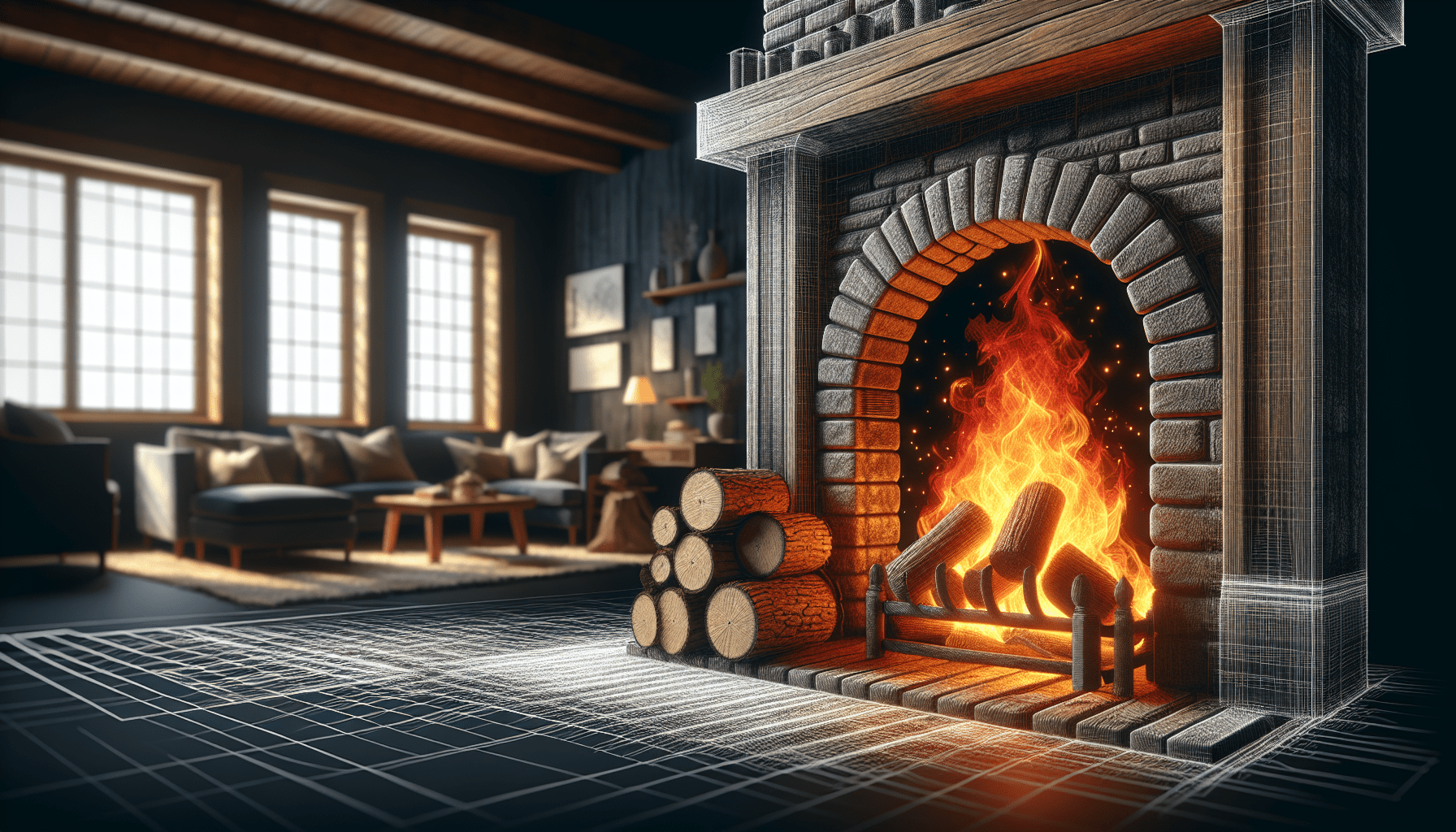How often do you think about cleaning your fireplace? It might not be top of mind, but understanding how often to clean your fireplace is essential for both safety and comfort. Whether it’s the warmth of a crackling fire on a chilly night or the cozy ambiance it brings to your space, having a well-maintained fireplace can add charm to your home. Let’s break it down.
The Importance of Keeping Your Fireplace Clean
You might wonder why maintaining your fireplace is necessary. For many, it’s a source of warmth and joy, especially during the colder months. Yet, neglecting proper cleaning can lead to serious safety issues.
Fire Safety
One of the main reasons for cleaning your fireplace regularly is fire safety. A dirty chimney can harbor flammable creosote buildup, which is a byproduct of burning wood. If left unchecked, this buildup can ignite, leading to dangerous chimney fires. Ensuring that your fireplace and chimney are clean can prevent these hazards, giving you peace of mind as you enjoy your evening flames.
Air Quality
Besides ashy aesthetics, a dirty fireplace may negatively impact your indoor air quality. The particles produced by burning logs can circulate in your home, aggravating asthma or allergy symptoms. Keeping your fireplace clean helps create a healthier environment for you and your family.
How Often Should You Clean Your Fireplace?
When it comes to how frequently you should clean your fireplace, there are a few factors to consider. These include how often you use the fireplace, what you burn, and the type of fireplace you have.
General Guidelines
While practices can vary, a commonly suggested rule is to have your chimney inspected and cleaned at least once a year, preferably before the heating season begins. This ensures that any potential hazards are addressed beforehand.
Monthly Checks
If you’re someone who loves to roast marshmallows while cozying up with a book, you might want to check your fireplace monthly. Look for signs of soot buildup or any odd smells when the fire isn’t burning. These can be indicators that it’s time for a good clean.
Wood-Burning Fireplaces
If you use a wood-burning fireplace, you should consider cleaning it more frequently than gas or electric options. Experts often recommend cleaning after every cord of wood burned or, at minimum, once every three months during the heating season.
Soot and Creosote Buildup
It’s essential to keep an eye on soot and creosote levels. If you notice sticky, tar-like deposits, it’s an indication that a good cleaning is necessary. This buildup can lead to chimney fires, so being proactive is vital.
Gas Fireplaces
Gas fireplaces are generally easier to manage in terms of cleaning. While you still need to have them inspected once a year, you may not need to clean them as often. Simply wipe down the exterior, check the vents, and look for any blockages. If you notice any issues, it may be time for professional assistance.
Signs That Your Fireplace Needs Cleaning
Sometimes, the schedule isn’t enough, and you need to rely on your senses. Here are a few signs that indicate your fireplace might need cleaning:
Unpleasant Odors
Have you noticed any strange smells wafting from your fireplace, especially when it’s not in use? This could signal a buildup of creosote or soot, which means it’s time for a cleaning.
Excessive Smoke
If smoke backflows into your home instead of venting outside, the chimney may be clogged. This situation necessitates immediate cleaning and inspection.
Slow or Incomplete Burns
If you find your fires burning slowly or producing a large amount of smoke without enough heat, it could indicate creosote buildup obstructing airflow. A good cleaning could resolve these issues.
How to Clean Your Fireplace
The process of cleaning your fireplace may sound daunting, but breaking it down into manageable steps makes the task much more approachable. Plus, there’s something oddly satisfying about cleaning up the remnants of past fires.
Gather Your Supplies
Before getting started, ensure you have the following materials on hand:
- Stiff-bristle brush
- Vacuum with a hose attachment
- Bucket
- Hearth broom and dustpan
- Protective gear: gloves and a mask
Preparation
Start by removing everything from the fireplace. This includes any remnants of wood, ashes, or soot. Use the vacuum to clear the area and make sure you’re working in a space that’s safe and comfortable.
Scrub the Walls
Take your stiff-bristle brush and clean the inner walls of the fireplace. Work your way from the top down, being cautious of any flying dust or soot. Sweep it into your bucket to keep your area tidy.
Vacuum Up the Ashes
Once you’re done scrubbing, switch to the vacuum to clear any remaining ashes that may have fallen during your scrubbing process. Ashes can carry fine particles that get everywhere, so be thorough.
Clean the Surrounding Hearth
While the interior is important, don’t forget about the exterior. Wipe down the hearth and any surround mantel. A mixture of warm water and mild soap works well to remove soot and grime.
Inspect the Chimney
After cleaning the fireplace itself, it’s a good idea to take a closer look at your chimney. If you feel comfortable, a flashlight can help you check for signs of creosote buildup or blocks. If anything seems amiss, consider professional help.
Hiring a Professional
While it’s possible to clean your fireplace yourself, there are times when calling in a professional is the best route.
When to Call in the Pros
If you notice any of the following signs or factors, it may be wise to hire a chimneysweep:
- Extensive Creosote Buildup: If you see a significant amount, a professional cleaning could be necessary.
- Structural Damage: Any cracks or damages to the chimney or fireplace should be evaluated by an expert.
- Frequent Smoke Issues: Persistent smoke problems indicate that the chimney might need a thorough inspection.
Finding a Reliable Professional
When seeking a professional, look for certified sweeps with good reviews. Check their credentials and ask about their cleaning process. An experienced chimney sweep will ensure everything is clean and safe for use.
Alternatives to Traditional Fireplaces
If cleaning your fireplace becomes burdensome or you’re looking for alternatives, consider exploring options like electric or gas fireplaces. These can provide similar ambiance without the hassle of regular cleaning.
Electric Fireplaces
Electric fireplaces require minimal maintenance, with no ashes or soot, meaning no cleaning required. Plus, they offer the charm of a flame without the mess.
Gas Fireplaces
As mentioned earlier, gas fireplaces tend to be easier to clean and maintain than their wood-burning counterparts. You’ll still need regular inspections, but the overall upkeep is less of a chore.
Conclusion
Cleaning your fireplace doesn’t have to be a hassle if approached with a regular schedule and awareness of the signs that indicate it needs attention. By maintaining that sparkling focal point in your home, you ensure both safety and comfort for yourself and your loved ones.
So, the next time you’re curled up with a book, or enjoying a cozy evening by the fire, take a moment to appreciate the warmth and beauty it brings. And remember, a clean fireplace is a happy fireplace. With regular maintenance, you’ll enjoy that inviting atmosphere for many winters to come. Don’t forget: Keeping your fireplace clean may just be one of the simplest pleasures you can afford to prioritize for your home.

